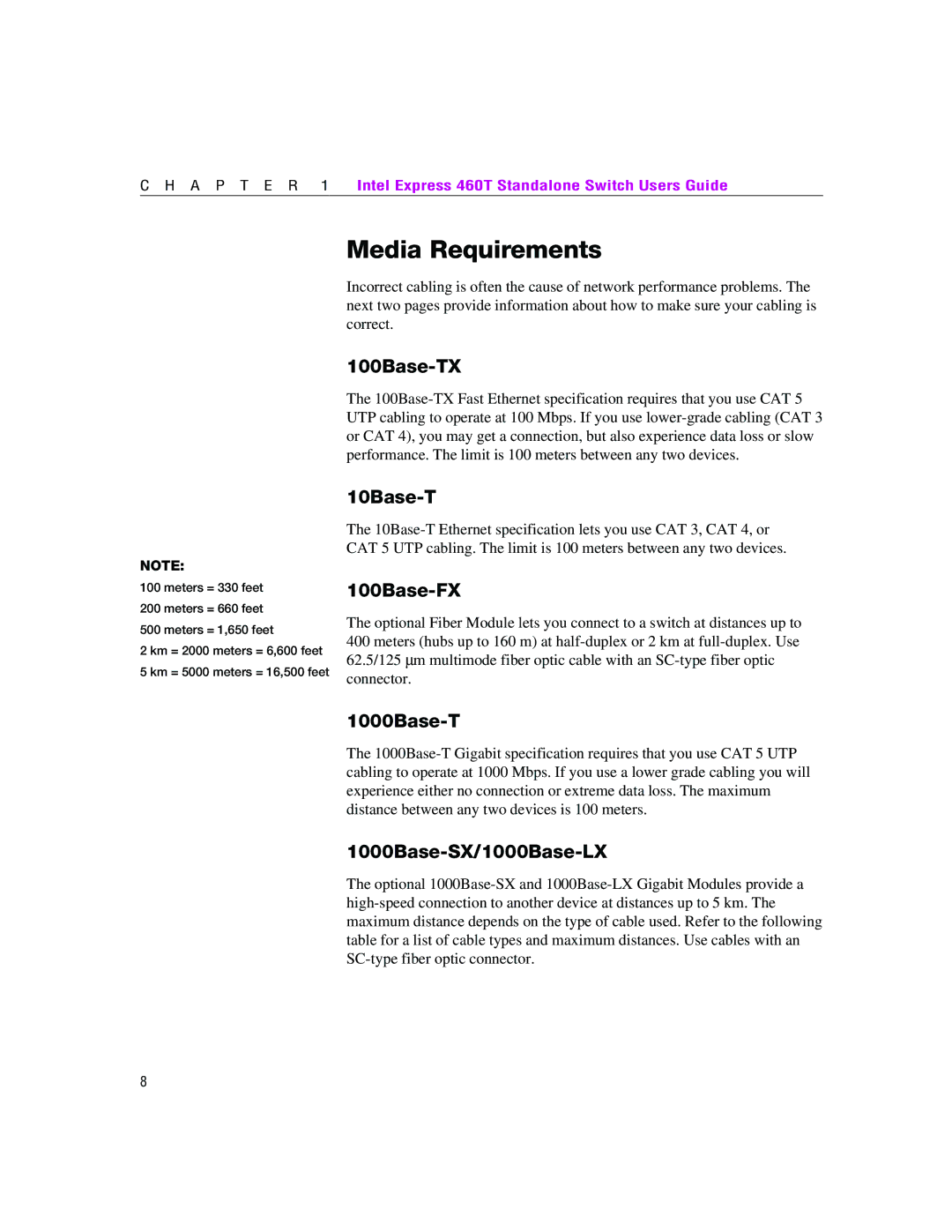NOTE:
100 meters = 330 feet
200 meters = 660 feet
500 meters = 1,650 feet
2 km = 2000 meters = 6,600 feet
5 km = 5000 meters = 16,500 feet
Media Requirements
Incorrect cabling is often the cause of network performance problems. The next two pages provide information about how to make sure your cabling is correct.
100Base-TX
The 100Base-TX Fast Ethernet specification requires that you use CAT 5 UTP cabling to operate at 100 Mbps. If you use lower-grade cabling (CAT 3 or CAT 4), you may get a connection, but also experience data loss or slow performance. The limit is 100 meters between any two devices.
10Base-T
The 10Base-T Ethernet specification lets you use CAT 3, CAT 4, or CAT 5 UTP cabling. The limit is 100 meters between any two devices.
100Base-FX
The optional Fiber Module lets you connect to a switch at distances up to 400 meters (hubs up to 160 m) at half-duplex or 2 km at full-duplex. Use 62.5/125 ∝m multimode fiber optic cable with an SC-type fiber optic connector.
1000Base-T
The 1000Base-T Gigabit specification requires that you use CAT 5 UTP cabling to operate at 1000 Mbps. If you use a lower grade cabling you will experience either no connection or extreme data loss. The maximum distance between any two devices is 100 meters.
1000Base-SX/1000Base-LX
The optional 1000Base-SX and 1000Base-LX Gigabit Modules provide a high-speed connection to another device at distances up to 5 km. The maximum distance depends on the type of cable used. Refer to the following table for a list of cable types and maximum distances. Use cables with an SC-type fiber optic connector.
